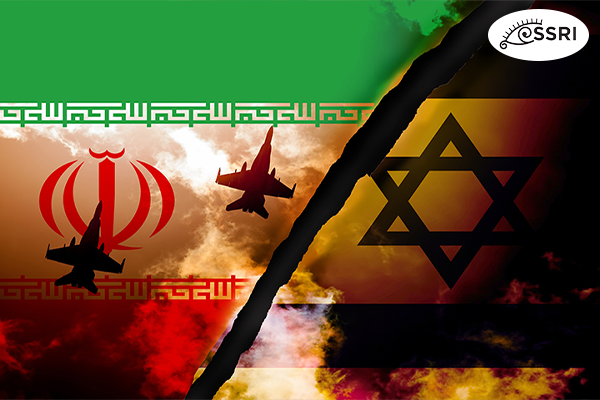Growing Regional Tensions Signal a Potential Shift from Proxy Conflicts to Direct Confrontation
For decades, Israel and Iran have clashed indirectly through regional proxies and covert operations. However, recent escalations suggest they may be closer to direct conflict than ever before. Iran’s support for militant groups like Hamas, Hezbollah, and the Houthis—each in conflict with Israel—coupled with Israel’s planned retaliation for an unprecedented Iranian missile barrage on October 1, has fueled global anxiety about the potential fallout of such a conflict.
Powerhouse Militaries in Close Proximity
Israel and Iran possess two of the region’s most powerful militaries. Israel’s advanced weaponry, bolstered by significant U.S. military spending and technology, has enabled it to maintain a robust defense while remaining an arms export leader. Iran, on the other hand, has developed a formidable military force and an advanced missile arsenal, emphasizing precision strike capabilities and a fleet of long-range drones. This military balance raises the stakes, as each country’s capabilities heighten the risk of widespread and severe conflict.
A Conflict Could Ensnare the U.S. and Gulf Allies
Any direct war between Israel and Iran could also drag the United States and its Gulf allies into the conflict. As a close ally, Israel’s actions might prompt U.S. involvement, especially with American forces already stationed in the region to deter escalation. In response to rising tensions, the U.S. has increased its military presence, sending advanced missile defense systems and additional troops to support Israel. However, Iran has warned that any assistance to Israel could legitimize attacks on Gulf nations with U.S. bases, potentially pulling Qatar, the UAE, Bahrain, and Kuwait into the fray.
Global Economic Impacts of a Potential Oil Disruption
While Israel has stated it will not target Iran’s nuclear or oil infrastructure, any attack could inadvertently destabilize global oil markets. An Israeli strike on Iranian oil installations might provoke retaliatory attacks on refineries in Saudi Arabia or the UAE, or even threaten shipping through the Strait of Hormuz—a critical corridor for global oil supplies. Such disruptions could spike oil prices, straining economies worldwide, particularly affecting nations reliant on imported fuel.
The High Risk of Miscalculation Escalating to Full-Scale War
Historically, both Israel and Iran have avoided direct conflict. However, recent actions suggest that each may now be more willing to engage directly. Miscalculations, as seen when Iran launched over 300 missiles and drones in response to the killing of Iranian officials, could lead to severe consequences. The recent missile barrage targeting Israeli civilian areas may have undermined previous deterrents, increasing the likelihood of one side misstepping and igniting a broader conflict.
Global Implications of a War That Could Reverberate Beyond the Middle East
The potential for a direct Israel-Iran war raises alarms worldwide. The repercussions would extend beyond the immediate region, affecting diplomatic ties, economic stability, and energy security on a global scale. Given the high-stakes scenario, nations are closely monitoring developments, fearing that any escalation could spiral out of control, leading to a conflict with lasting global consequences.
Israel-Iran Conflict Enters Open Warfare After Decades of Shadow Battles
Decades of Proxy Warfare Erupt into Direct Strikes, Raising Global Tensions
For years, Israel and Iran engaged in a shadow war, utilizing proxy forces and covert operations. However, on October 1, 2024, this conflict escalated into open warfare as Iran launched a massive missile attack on Israel. This strike, reportedly a retaliation for the assassinations of Hamas leader Ismail Haniyeh and Hezbollah chief Hassan Nasrallah, marks a significant shift in the long-standing conflict, indicating that further escalation is possible.
Israeli-Iranian Tensions Push Beyond Proxy Forces
The indirect confrontations between Israel and Iran have transitioned to more open conflict. Israel’s recent assassinations in July and September prompted Iran’s missile barrage, following a smaller-scale assault in April that caused minimal damage. While Israel’s earlier response was restrained—partly due to U.S. influence—the latest Iranian strike is seen as a significant escalation, aimed at restoring Iran’s deterrent capabilities against its adversaries.
Israel’s Strategic Shift to Lebanon
In the wake of heavy operations in Gaza, Israel has turned its attention to southern Lebanon, challenging Iran-backed Hezbollah forces. This strategic shift includes Israeli strikes on key Hezbollah leaders and communication systems. In response, Iran has sought to counter Israel’s momentum in Lebanon and reaffirm its commitment to its allies. Analysts suggest that Iran cannot afford to appear inactive amid Israeli advances along its northern border.
Iranian Motivations: Aiming to Slow Israel, Regain Face, and Restore Deterrence
Iranian leaders frame the October strike as essential for countering Israel’s gains. Besides protecting Hezbollah, Iran aims to save face within its regional network and demonstrate its commitment to the “Axis of Resistance.” Despite initial inaction after Haniyeh’s assassination, Iran’s recent escalation signals a firm stance, intended to reassure allies of Tehran’s resolve.
The Risk of Further Escalation
The conflict between Israel and Iran has now entered an unpredictable phase. Iran’s October strike was its most significant yet, with Israeli sources disputing its effectiveness. Meanwhile, Israel has vowed further action, intensifying the likelihood of prolonged direct conflict.
As both sides prepare for their next moves, the question remains: how far will Israel and Iran go to secure their objectives, and what global repercussions will follow? The world watches closely, aware that the balance of power in the Middle East is teetering toward a potentially devastating outcome.




